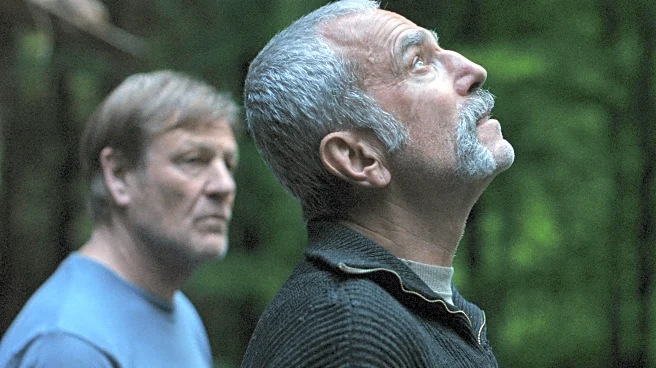What's Happening?
Cillian Murphy takes on the role of Steve, a headteacher at a residential school for troubled boys, in the film 'Steve'. Directed by Tim Mielants and adapted by Max Porter from his novella 'Shy', the film offers a day in the life of Steve, showcasing the struggles of managing an underfunded school. The narrative focuses on the interactions between the stressed headteacher and the students, who are depicted as smart, angry, and defensive. Murphy's portrayal of Steve is noted for its intensity, capturing the essence of a dedicated educator at the brink of exhaustion. The film is set to be available on Netflix starting October 3.
Why It's Important?
The film 'Steve' sheds light on the challenges faced by educators in underfunded schools, particularly those dealing with troubled youth. By focusing on the emotional and psychological aspects of the headteacher's role, the film brings attention to the systemic issues within the education system. It highlights the need for better funding and support for schools that cater to vulnerable populations. The portrayal of the students and staff offers a realistic view of the pressures and demands in such environments, potentially influencing public discourse on educational reforms and mental health support in schools.
What's Next?
As 'Steve' becomes available on Netflix, it may spark discussions among educators, policymakers, and viewers about the state of educational institutions for troubled youth. The film's release could lead to increased advocacy for policy changes and funding allocations to support schools facing similar challenges. Additionally, it may inspire further cinematic explorations of educational themes, encouraging filmmakers to delve into the complexities of the education system and its impact on students and teachers.
Beyond the Headlines
The film's focus on the emotional toll of working in a challenging educational environment raises questions about the mental health support available to educators. It underscores the importance of addressing burnout and stress among teachers, advocating for systemic changes to improve working conditions. The narrative also touches on broader societal issues, such as the stigmatization of troubled youth and the need for inclusive educational practices that cater to diverse student needs.











